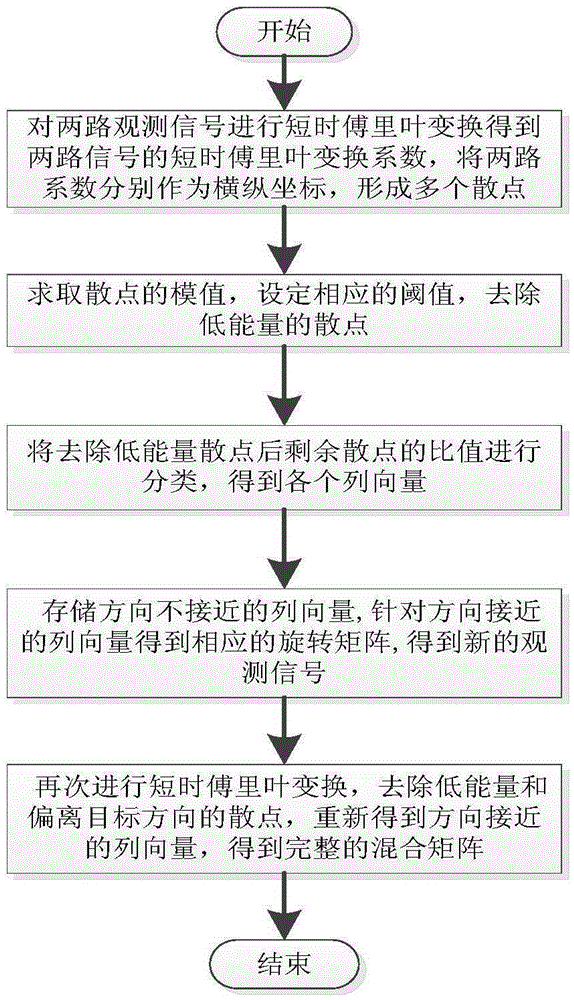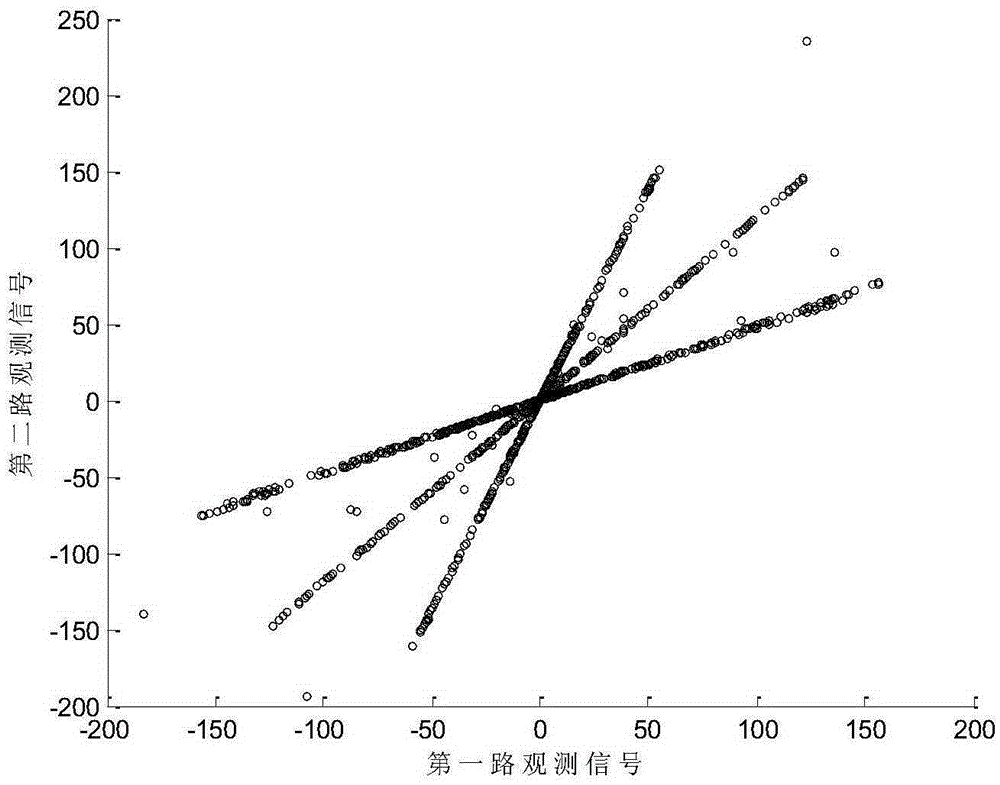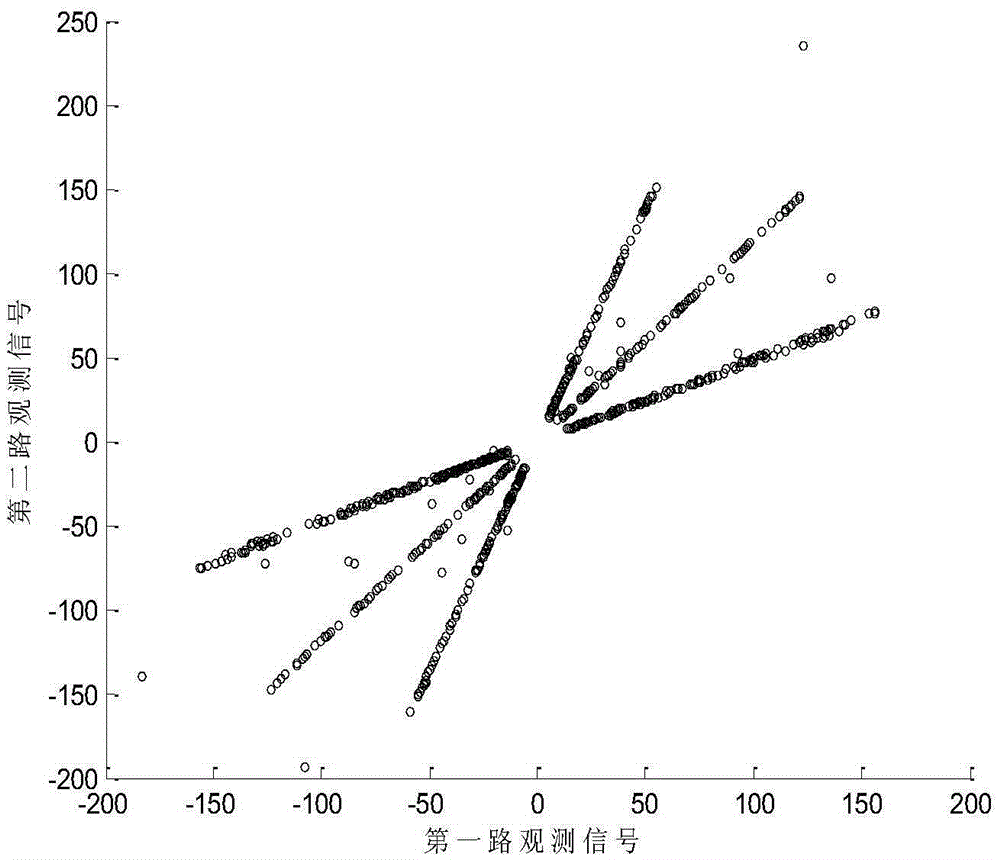Mixing matrix estimation method aiming at underdetermined blind source separation
An underdetermined blind source separation and mixing matrix technology is applied in the field of mixing matrix estimation for underdetermined blind source separation. The effect of precision
- Summary
- Abstract
- Description
- Claims
- Application Information
AI Technical Summary
Problems solved by technology
Method used
Image
Examples
Embodiment Construction
[0024] like figure 1 As shown, the hybrid matrix estimation method for underdetermined blind source separation of the present invention includes the following steps:
[0025] Step 1: Perform short-time Fourier transform on the received two observation signals respectively to obtain the short-time Fourier coefficients X of the two observation signals 1 (t,f) and X 2 (t,f) (t represents the observation time, f represents the frequency), the X 1 (t,f) and X 2 The corresponding values of (t, f) are used as abscissa and ordinate respectively to form multiple scatter points.
[0026] Underdetermined blind separation in the case of linear instantaneous mixing can be represented by the following mathematical model:
[0027] x(t)=As(t)(1)
[0028] In the formula, s(t)=[s 1 (t),s 2 (t),...,s M (t)] T is the M-dimensional source signal vector, x(t)=[x 1 (t),x 2 (t),...,x N (t)] T is the N-dimensional observation signal vector, where M>N. t is the observation time, t=1,......
PUM
 Login to View More
Login to View More Abstract
Description
Claims
Application Information
 Login to View More
Login to View More - R&D
- Intellectual Property
- Life Sciences
- Materials
- Tech Scout
- Unparalleled Data Quality
- Higher Quality Content
- 60% Fewer Hallucinations
Browse by: Latest US Patents, China's latest patents, Technical Efficacy Thesaurus, Application Domain, Technology Topic, Popular Technical Reports.
© 2025 PatSnap. All rights reserved.Legal|Privacy policy|Modern Slavery Act Transparency Statement|Sitemap|About US| Contact US: help@patsnap.com



